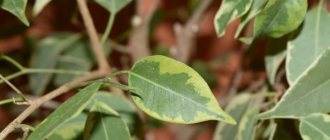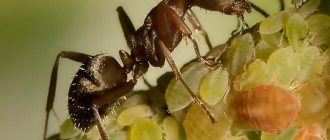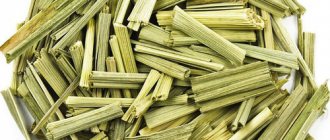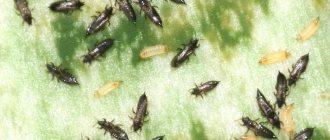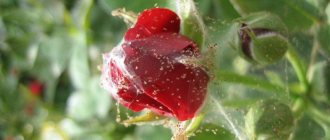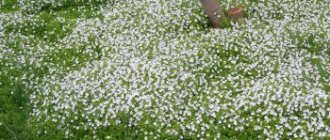Why does the forest cactus wither?
Let's consider all possible reasons:
Excess fertilizer
Like many indoor plants, the Christmas tree tolerates a lack of fertilizer better than its excess.
In the wild, this type of cactus lives in tropical forests, practically without soil, located on the trunks and aerial roots of large trees.
Feeding the Decembrist must be done correctly and interrupted during the flowering period - excess fertilizer will burn the roots, dropping buds and wilting of the leaves are almost guaranteed.
Root system rotting
Root rot usually occurs due to stagnation of water at the level of the root system.
If the plant sways, sits unsteadily in the ground and seems easy to pull out of the pot, this is a signal of problems with the roots. This can happen for a number of reasons:
- Lack of sufficient drainage holes in the plant pot. Watering too much will make the situation worse.
- The cold in the room where the Christmas tree is located, coupled with excessive watering, can cause acidification of the soil and rotting of the roots.
- The death of the roots can be a consequence of overheating, both due to the location of the pot with the cactus in the sun, and as a result of the heat coming from the battery.
Infections
Decembrist's limp leaves may indicate the presence of an infection.
Most often, zygocacti suffer from fungal diseases, such as late blight, fusarium, phytium, which are transmitted with contaminated soil.
These infections are aggravated by waterlogged soil and insufficient drainage. They are easy to identify: late blight affects the base of the plant root, the connection between the root system and the stems is disrupted, which leads to dehydration of the Christmas tree even with sufficient watering. Fusarium also manifests itself in approximately the same way.
Accompanying signs of infection may be the loss of leaf segments, their pale or even gray color.
Improper care
The conditions for keeping Schlumbergers should be as close to natural as possible. Excessive watering destroys the forest cactus, because its root system is weak and is supplemented by numerous aerial roots. The roots cannot cope with too much water and rot.
Also, you should not use cold water for irrigation - this type of cactus is accustomed to warm tropical rains.
Untimely replanting and stress from a sudden change in growing conditions can have a detrimental effect. The Christmas tree does not tolerate drafts, extreme heat and cold, or too dry air.
Spider mite
Along with phytium and late blight, spider mites can attack the Christmas tree.
You should pay attention to the stem: if it is covered with a coating similar to rust, and thin white cobwebs appear between the shoots, then the plant is suffering from mites. Leaves and buds may soon begin to fall
The insects themselves are very small and can be brown, reddish or yellow.
Mealybugs
If mealy-like lumps are visible between the leaf segments, the plant has been attacked by mealybugs. These pests drink the sap of the plant. The buds are the first to suffer from them; sticky white mucus remains on the petals.
Shchitovka
Scale insects are also sucking insects. It can be identified by the appearance of small brown tubercles on the leaves of the cactus.
Basic rules for caring for a Decembrist
Caring for a Christmas tree is not particularly difficult if you approach the process with all responsibility and care.
Simple rules of care are as follows:
- provide the zygocactus with sufficient lighting, but do not expose it to direct rays of the sun, from which it should be shaded;
- try to place the plant on window sills that face east;
- avoid sudden changes in temperature;
- suitable temperature conditions for growth and development - from +18 to +25 degrees, during flowering - from + 16 to +20 degrees, before the start of the flowering process - from +12 to +16 degrees;
- monitor a sufficiently high level of humidity (at least 60–70%), the situation can be corrected by spraying the plant and placing it in a container with a wet drainage layer;
- the conditions of keeping the Decembrist should be as close to natural as possible;
- during flowering, the zygocactus does not need to be touched, moved, or turned again, because it can get rid of the buds;
- in the warm season, the most suitable for zygocactus is growing on balconies, in garden plantings in a shaded place and protected from drafts, gusts of wind, and direct access to the sun;
- after flowering has stopped and until spring, it is better to place the zygocactus in a room with a low temperature;
- The zygocactus should be watered regularly, the water should be left to stand and allowed to warm up to at least room temperature;
- Christmas tree needs to be fed systematically monthly;
- the plant needs pruning, but it is better to remove unnecessary parts manually;
- at the end of winter, it is recommended to replant the zygocactus annually into new soil, into pots slightly larger than the previous ones; adult plants are replanted as needed, but more often than once every 3–4 years;
- when replanting, there should be a drainage layer at the bottom of the pot;
- a light and loose soil mixture should consist of 2 parts of peat, 1 part of fertile soil, 1 part of coarse sand; for the purpose of disinfection, it is worth adding a small amount of crushed coal to the soil mixture, and to increase water permeability - brick chips.
Did you know? Decembrist is able to delight with its amazing flowering for two to three decades.
The Decembrist is particularly beautiful and attractive, and with proper care it will not cause any trouble to its owners. But unpleasant moments from pest attacks and certain diseases are possible even with proper care. Therefore, you need to be attentive to your pets in order to eliminate the threat in time, and most importantly, know how to do it.
Decembrist diseases and pests (treatment)
Why do the leaves of the Christmas cactus or Decembrist turn red: 6 reasons and methods for eliminating the problem
The Christmas cactus is resistant to various kinds of diseases and pests, but still some risk factors exist: overdried or flooded, infection from neighboring plants, weakened plant defenses
Close attention is required to help the flower cope with the disease when the first signs appear.
Insects - pests
Spider mites are small, red or yellow, bristly arachnid pests. Signs of damage are massive loss of segments with the presence of white spots. The cause may be dry air. Spray with a solution of the insecticide “Fitoverm”, “Aktofit”, Vertimek”, increase the air humidity.
The mealybug is a sucking insect 3-7 mm in size, covered with a whitish coating, producing mucus; Soft white lumps form between the shoots, the segments seem to be sprinkled with flour. Flowers especially suffer, the buds become slimy, wither, and fall off. Spray with horsetail tincture, use Aktara and Confidor chemicals.
The scale insect is a particularly dangerous, small (5 mm), flat, sap-sucking insect, protected by a shell. It sticks to the surface of the segment, literally sucking out the juice. Females are motionless, laying and incubating eggs. The larvae move quickly along the shoots. Males are flying and can infect neighboring plants. Young shoots are especially attractive to the pest. Control methods are labor-intensive, poorly effective, and unsafe:
- Remove insects, eggs, and larvae by hand, using an insecticide-soaked cloth or a cotton swab.
- Clean the Schlumbergera shoots with a soapy toothbrush or moistened with a tobacco solution (do not rinse).
- Spray the soil with insecticide.
- After a day, wash off the solution, dry the plant, re-treat it (shoots, soil) with an insecticide, seal it hermetically for 30 - 40 minutes with polyethylene, without air access, the scale insects should die under the influence of chemicals.
- Remove the plastic, leave the Schlumberger for another 2 days without washing off the poison, then take a shower.
Fungal diseases
Fusarium. Mushrooms can remain in the substrate for a long time; rapid development is facilitated by increased soil moisture, sharp temperature fluctuations, and poor soil. Fungal spores penetrate from the soil to the roots; through wounds on the shoot, they reach the vessels of the plant, rapidly rising up them, releasing toxins, decomposing tissues. Decembrist changes its natural color to reddish-purple, the shoots droop, wrinkle, and the edges of the segments become watery.
Treatment. Christmas isolate. Remove all affected areas. Treat the soil and shoots with “Maxim” and “Fundazol” fungicides; roots - dust with sulfur.
Treat the location of the zygocactus and nearby plants with a fungicide. Subsequent preventive spraying with insecticides will preserve the health of the flower.
Late blight. The initial stage is manifested by sagging shoots, as if there is a lack of moisture; additional watering speeds up the process, the color of the segments turns pale and becomes covered with dark spots and stripes. The roots are affected by rot. The source of infection is the substrate. Fungal spores can lie dormant there for up to 8 years.
There is no cure. The infected plant must be thrown away along with the soil. Scald the pot with boiling water. If it is possible to recognize the disease at the initial stage, treatment with the chemicals “Fundazol”, “Ridomil”, “Previkul” is possible.
Ordinary indoor plants get sick with these diseases in winter, when Decembrist blooms. A careful inspection of the shoots will help to recognize the infection in time.
Advice! For successful growth of the Decembrist, additionally scald with boiling water or calcine the purchased soil in the oven.
Diseases
Decembrist diseases can be fungal and bacterial in nature. They are manifested by the appearance of spots of different sizes and colors on the surface of leaves and buds. Treatment depends on the type of disease.
The plant is bothered by fungal diseases such as late blight, phytium and fusarium. The first two come from contaminated soil and first damage the root system. Falling off of segments, wilting of buds and gray (pale) color of the plant are sure signs of fungal damage. The Decembrist is withering, what to do? You can help the flower by treating it with the following drugs: skor, topaz, maxim, vitaros.
The fungus of the latter penetrates not only with the soil, but also through the wounds of the zygocactus, which leads to rotting of the roots and neck of the plant.
Important! A plant infected with fusarium cannot be saved; it can only be prevented. To prevent the disease, fungicides Mikal and Bayleton are used.
Segment affected by the fungal disease fusarium
Bacterial damage is caused by Erwinia bacteria. A moist dark spot forms at the base of the stem, which subsequently covers the entire plant. The flower gradually acquires a red-violet hue. Bacterial damage is one of the most common reasons why Decembrist leaves turn red. Treatment of infected areas is useless. They should be removed or a healthy cutting should be separated and a new plant grown from it.
Other diseases and pests that affect the plant
Ways to combat diseases and pests of dracaena
In addition to what is described above, when growing Decembrist, flower growers may encounter other problems:
- The leaves have withered, become pale and lifeless - there are several reasons: pest damage, sunburn or drying out of the earthen ball in the pot. Inspect the plant and balance the care.
- Brown spots appear on leaf segments - sound the alarm, the plant has been infected by scale insects. To combat this pest, a simple laundry soap is suitable, which needs to be used to treat the leaves on all sides. if this measure does not help, you can buy an insecticide in the store and spray the flower.
Important! If the drug turns out to be ineffective, there is only one thing left to do - cut off all the damaged areas, otherwise the plant will die. It is difficult to remove this parasite, since microscopic insects can even settle in curtains
Therefore, once every 2-4 days, give the plant a shower with a soap solution or buy a special preparation that should be used to treat not only the plant, but also the space around it. If the mite is not found, then move the plant in the pot; the roots may have rotted
Clumps of white insects on the leaves are mealybugs. You can fight it with a soap solution; to do this, you need to wet a cloth and wash off all the pests. Hard to reach places, simply spray with soap solution. If it doesn’t help, buy a special preparation at a flower shop and treat the plant according to the instructions on the package.
The plant is lethargic and drops its buds - this is a spider mite. It is immediately visible; upon close examination, you can see a thin cobweb on the plant, while the leaves themselves will be covered with small brown spots.
It is difficult to remove this parasite, since microscopic insects can even settle in curtains. Therefore, once every 2-4 days, give the plant a shower with a soap solution or buy a special preparation that should be used to treat not only the plant, but also the space around it. If the mite is not found, then move the plant in the pot; the roots may have rotted.
Schlumbergera is a magnificent, flowering plant that can be susceptible to various diseases and pests. But don’t worry too much, just give your indoor plant a little more attention and time. Remember - this is a living organism that feels your attitude towards it.
https://dacha.expert/domashnie-rasteniya/sukkulenty/shlyumbergera/bolezni-i-vrediteli-dekabrista.htmlhttps://doma-v-sadu.ru/komnatnye-rasteniya/bolezni-dekabrista.htmlhttps://na- zemle.info/komnatnye-rasteniya/kaktusy-i-sukkulenty/shlyumbergera/bolezni-i-vrediteli-dekabrista/krasneyut-listya.html
Possible problems during cultivation
When cared for in accordance with all the rules, zygocactus grows well and blooms profusely. However, problems may arise during cultivation, so it is recommended to study the main ones.
Diseases and pests of the Decembrist
The plant can be attacked by some insects and fungal diseases. Therefore, the leaves of the plant need to be inspected periodically.
- If whitish lumps like cotton wool appear between the shoots, it means that the Decembrist is infected with a mealybug. Getting rid of the pest is quite difficult. The plant needs urgent treatment with special preparations that are sold in flower shops.
- Leaves covered with a rusty coating and almost invisible cobwebs indicate that the zygocactus is infected with spider mites. These are very small and almost invisible insects of a reddish, yellow or brown color. They appear when there is insufficient air humidity. You can get rid of them with the help of the drug “Neoron”, “Fitoverm”, “Actellik”.
- Of the fungal diseases, Decembrist is most often affected by late blight, phytum, and fusirium. First of all, the root neck of the flower suffers, as a result of which it begins to wither in moist soil, becomes gray and pale, and loses its segments. In this case, the plant must be treated with Vitaros, Topaz and Maxim fungicides. In addition, you need to ensure that the soil does not become waterlogged. It should dry out well between waterings.
Why doesn't the Decembrist bloom?
Most often, the reason lies in non-compliance with growing conditions:
- Insufficient watering.
- Insufficient lighting.
- The pot is too small for the plant and requires replanting.
- Insufficiently nutritious soil.
In order for a plant to bloom, it must be properly prepared for flowering. To do this, in the fall they provide him with a period of rest by removing the zygocactus into a cool room. At this time, it practically does not need to be watered and does not need to be fed at all. To make the zygocactus bloom, at the end of November it is moved to a well-lit place and watered. The plant will “wake up” and begin to produce buds.
To achieve abundant flowering of the Decembrist, you need to properly care for it:
In winter, it is recommended to illuminate the plant with an additional lighting source. During the flowering period, you should not move or rotate the pot, or prepare cuttings for propagation. It is strictly forbidden to expose the plant to temperature changes during flowering. If there is cool air in the room, flowering will last longer. The bush will bloom profusely in a narrow pot. Temperature conditions no higher than +16C promote more active flowering. After a period of rest, watering and fertilizing are resumed very carefully. Otherwise, the plant may get very stressed and drop its buds.. If you brought a blooming Decembrist home, and its flowers began to fall off, there is no need to panic
The plant simply adapts to new growing conditions
If you brought a blooming Decembrist home, and its flowers began to fall off, there is no need to panic. The plant simply adapts to new growing conditions.
Why does the zygocactus wither?
As already written above, the plant withers if it suffers from fungal diseases. But there may be another reason - rotting roots.
If the trunk of the Decembrist began to sway, and the flower itself lost stability, then it is possible that its roots died. This can happen as a result of watering with cold water, hypothermia of the plant, or, conversely, from overheating of the flowerpot in the sun. Too much fertilizer can burn the roots.
If such a problem is detected, the flower must be urgently transplanted into another soil. The roots are inspected during transplantation, and the affected ones are removed. Then the root system of the plant is sprinkled with a little crushed coal and dried. After this, the zygocactus is planted in a fresh earthen mixture and watered only as needed.
Why do the leaves fall?
Decembrist leaves can fall, seemingly for no reason. However, nothing happens that simply, so you should find out the reason:
- If a plant is infected with pests, it is treated with special preparations.
- If the leaves of the plant are clean and there are no insects on them, then perhaps the reason is a lack of nutrients. In this case, the Decembrist is watered or sprayed with fertilizers for epiphytic cacti.
- The reasons for the fall of the final segments can be: draft, sudden temperature changes, too dry air or a transplant done at the wrong time.
Symptoms of mixed connective tissue disease
- paleness of the tips of the fingers and toes after psycho-emotional stress or exposure to cold;
- feeling of chilliness in the hands and feet;
- swelling of the fingers or hands;
- arthralgia;
- joint stiffness in the morning;
- polyarthritis;
- polymyositis of the proximal parts of the extremities;
- muscle tightening;
- muscle weakness;
- spider veins on the skin;
- the appearance of red or white spots on the skin;
- baldness;
- hyperpigmentation around the eyes;
- dry mouth;
- difficulty swallowing dry and poorly chewed food;
- photophobia;
- redness of the eyes;
- fever;
- enlargement of regional lymph nodes;
- violation of the depth, frequency and rhythm of breathing;
- hematuria.
Sciarides: ways to control pests of indoor plants
The Decembrist withered: what to do in case of infections?
So, you have determined why the Decembrist has limp leaves, what to do if there is an infection? If everything is not very neglected and the Decembrist’s wilted leaves have just appeared, then it will be enough to treat the plant with special medicinal preparations. Popular ones are “Fitosporin”, “Maxim”, “Skor”, “Topaz”. Carry out the treatment throughout the entire plant, not forgetting the root base.
Sometimes such measures are clearly not enough. For example, if the entire soil is affected by infection. In this case, medications will clearly not help. The only way out is to replant the flower and then treat it with medicine. Once in fresh, good soil, the roots will begin to come to life, they will begin to feed the plant with water and nutrients. This will save the Decembrist.
Treatment of erythremia
- Bloodletting (frequency and volume depend on the stage of the disease).
- Cytostatic drugs for severe disease.
- Anticoagulants.
- Antiplatelet agents (Aspirin, Clopidogrel).
- Antihypertensive therapy.
- Transfusion of fresh frozen plasma in cases of increased bleeding.
Essential drugs
There are contraindications. Specialist consultation is required.
- Aspirin (antiplatelet agent). Dosage regimen: orally, after meals, with a sufficient amount of water at a dose of 50-250 mg/day. for 3 doses.
- Hydroxyurea (antitumor agent, antimetabolite). Dosage regimen: orally, in the morning on an empty stomach at an initial dose of 0.5-2.0 g/day. once until blood counts normalize. After achieving remission (temporary weakening or disappearance of the manifestations of the disease), maintenance therapy of 0.5 g of the drug daily continuously.
- Reaferon (antitumor, immunomodulatory agent). Dosage regimen: IM, SC 15-30x106 IU 2-3 times a week.
- Anagrelide (antiplatelet agent). Dosage regimen: orally, 1-10 mg/day, maintenance therapy 1.5-2.5 mg/day.
general description
Alcoholic polyneuropathy (APN) (G62.1) is a lesion of the peripheral nervous system that occurs as a result of alcohol abuse, one of the common complications of alcoholic illness.
Prevalence of alcoholic polyneuropathy: 10–90% among patients with alcoholism. There is evidence that daily consumption of 100 ml of ethyl alcohol (corresponding to 300 ml of strong alcoholic drink) leads to the development of APN.
Causes of alcoholic polyneuropathy:
- Toxic effect of ethyl alcohol on nerve fibers.
- Hypovitaminosis B1 in the body, which occurs due to inadequate nutrition, impaired liver function, and impaired absorption processes in the intestines in people who abuse alcohol.
- Disruption of microcirculation in nerve fibers that occurs during alcoholism.
Tips “from the opposite side”: which beauty procedures are not useful
All women want to be beautiful, but not everyone makes the right decisions for this. Many girls do cosmetic procedures without thinking at all about how harmful they are to their hair. You begin to notice the problem only when severe damage or increased hair loss becomes visible. In this case, you should stop and not torment your unfortunate curls anymore.
But how do you understand what exactly you are doing wrong? It's simple - it's worth reading the advice of trichologists for hair loss in women, which clearly lists procedures contraindicated for alopecia. Let's look at this in more detail.
Perm
This is the most traumatic procedure for hair, which is strictly contraindicated in case of increased hair loss. Due to the effects of chemicals, the hair structure itself changes, which leads to significant damage. If you are being treated by a trichologist, but continue to do perms, recovery will take a long time or will be completely impossible.
Keratin straightening
During this procedure, the hair shaft is heated and treated with a special keratin compound. After straightening, the curls are weakened and do not tolerate any influence well. This leads to intense hair loss and other unpleasant consequences.
In principle, any procedures that involve heating cannot be useful: hair botox, straightening with an iron, curling with a curling iron, etc. Therefore, it is better to avoid them when treating with a trichologist.
Coloring
Dyeing cannot be the cause of intense hair loss, since with this procedure the dye mainly affects the hair itself, and not the hair follicle. However, such products damage curls to one degree or another (even natural henna and basma). Although the dye itself cannot cause alopecia, during the period of acute hair loss it is better to do without dyeing.
Building up
If a master with poor qualifications takes on the job, the procedure can lead to baldness of certain areas of the head after removal of the extensions. Such unsightly bald spots appear due to severe vascular spasm and poor circulation in the area of the hair follicles.
Therefore, if you are experiencing increased hair loss, this is absolutely no reason to immediately run to the salon for extensions. In such cases, this procedure, on the contrary, is contraindicated.
Due to the risk of additional vascular spasm and high stress on the hair follicles, you should also not do braids with Kanekalon, African braids, dreadlocks and other similar hairstyles.
Permanent makeup
During microblading or eyebrow tattooing, an inexperienced artist can damage the hair follicles, which leads to injury and death of the hairs. In addition, an allergy to mixtures used for permanent makeup can trigger hair loss.
By the way, plucking too frequently can also cause damage to your eyebrows. This is a common reason why women, in an effort to become beautiful, overdo it and completely lose their eyebrows. Remember that everything is good in moderation, including cosmetic procedures.
Ascites prognosis
It is quite difficult to give an accurate prognosis in the case of dropsy, since it is necessary to take into account a large number of different factors (the causes of the disease, its severity, the rate of development, the presence of concomitant diseases, the effectiveness of treatment, and so on).
Complications of the disease definitely worsen the prognosis, the most dangerous of which are peritonitis, umbilical hernia, respiratory failure, and intestinal obstruction.
The two-year survival rate for ascites is about 50%. The prognosis for the refractory form of the disease is even worse. About 50% of patients die within a year.
Unfavorable factors that can worsen the prognosis are a lack of proteins in the body, age 60 years and older, diabetes mellitus, low blood pressure.
What to do if the Decembrist does not bloom
So, we figured out when the Decembrist blooms. However, some florists never wait for the coveted inflorescences in the winter months. Why does this happen and how can you help the Christmas tree get bright and attractive bunches of flowers?
Among the reasons for the lack of flowers, experts point out poor-quality (not meeting the plant’s requirements) soil, low air humidity, excessive shade, and lack of nutrients. All these factors need to be analyzed and eliminated.
Another question is how to “force” Schlumbergera to bloom at home?
You need to prepare in advance and do the following:
- choose a planting container that is not too wide (so that the flower is cramped);
- do not place the pot in a too warm place - the optimal temperature is +16 degrees (in a cool microclimate, flowering will last longer);
- exclude serious temperature changes;
- put the pot with the zygocactus in one place and refuse to move it or turn it over (otherwise the buds will fall off);
- carry out pruning (pinching) in advance and do not break off the stems in October-November, otherwise you may not get buds at all;
- organize additional lighting in the room if there is a lack of sunlight in the autumn-winter period (you can place the pot next to the lighting fixture);
- refuse to fertilize in September, since otherwise the plant will form stems rather than buds;
- reduce the intensity of watering during the formation of buds (October-November), but when the plant blooms, the volume of water can be slightly increased, but very carefully.
All these recommendations will allow you to achieve abundant flowering of the Decembrist. And, of course, it is necessary to follow the above-described principles of care so that the zygocactus feels great not only during budding, but throughout the year.
Why it doesn’t bloom, how to make Decembrist bloom
The lush greenery of the Christmas tree is beautiful even without buds, but the main feature of the plant is its flowering. Flowers of unusual shape and shade will not leave anyone indifferent. If suddenly the Decembrist refused to bloom, there may be several reasons for this.
The conditions of the development stages were violated: the timing of watering, fertilizing, and the temperature regime was not observed. What to do:
Growing season
Spring, summer - growing season (pampered and nurtured: watered with warm, settled water, fed with mineral fertilizers, given a shower).
Buds have appeared
Hardening is stopped, the flower is brought home, a permanent location for further growth is determined, and regular watering, fertilizing, and spraying begin.
Irregularly shaped flowerpot
A large pot or an elongated shape is detrimental to a forest cactus; a large amount of nutritious soil promotes the active development of the root system; there is no vitality left for the zygocactus to budding, so it is advisable to change the pot.
By following the rules of care, creating comfortable conditions for the proper development of the Decembrist, by the next season and for many years to come, the flower will delight with its exoticism.
Signs and superstitions associated with the Decembrist
Many people are superstitious and tend to associate problems in their lives with certain events, for example, with the flowering of plants. Signs have also been found for the Decembrist flower. Such superstitions can be positive and negative.
Positive signs:
- the cactus bloomed on time (in December), therefore, everything will be fine in relations with relatives;
- the buds opened at the beginning of winter - the coming year will bring many positive emotions;
- the flowers appeared a little prematurely - a new acquaintance is coming soon;
- flowering began a month before the usual dates - expect to receive an inheritance, marriage or the birth of a child.
Negative signs:
- the Christmas tree bloomed in mid-spring - superstitious people advise preparing for such unpleasant events as lack of money, difficulties at work, illness or death of relatives;
- finding a flower in the house means constant quarrels in the family, divorce from her husband, a young girl will not be able to find a chosen one (some believe that the Decembrist is a “husband’s man”).
There are no objective reasons that would limit or exclude the presence of Schlumbergera in the house. The plant is not poisonous, does not have thorns (unlike other cacti), and does not harm children and furry pets. Therefore, do not pay attention to various superstitions!
Causative agents of streptoderma
Streptococci are bacteria that can live in the presence or absence of oxygen. There are five main groups of these microorganisms - A, B, C, D, and G. The main causative agent of streptoderma is the causative agent of group A.
Approximately 40 percent of all skin diseases are caused by streptococcus. These bacteria live constantly on the skin and are considered opportunistic. They cannot penetrate the skin on their own. When the immune system is strong, microorganisms are in “sleep mode.” When the skin is damaged, hygiene is poor, or the body's defenses are reduced, bacteria cause skin disease.
When scratching areas of the skin damaged by the disease, bacteria are spread further throughout the body. The microorganism also likes a moist and warm environment. Therefore, if water gets on the wounds, it provokes the progression of streptoderma.
Air temperature
The reason why Decembrist's leaves turn red and wither may be hypothermia of the flower. For the Decembrist, a temperature of +14 degrees is considered critical. With it, necrotic processes begin in plant tissues. With a further decrease, the plant begins to fade sharply. Initially, the upper leaves lose turgor, and then the rest.
The flower can only be saved by raising the temperature to +18 degrees or more with moderate watering.
Only by knowing the main reason why Decembrist leaves turn red and wither, and what to do in this situation, can the plant be restored, otherwise it will die.
Increased air temperature can also provoke a problem with the leaves of the Decembrist. With insufficient watering, the plates intensively evaporate moisture, and have no way to replenish it. Therefore, it is recommended to water the plant regularly during hot periods, preventing the earthen clod from drying out. You should also additionally spray the above-ground part in the morning so that the flower has time to absorb moisture before the evening.
In winter, the flower should not be placed close to the heating system. To prevent the flow of hot air from the battery to the pot, it is recommended to lay a sheet of polystyrene foam, the width of which will be slightly larger than the window sill.
Important! In summer, the plant should be shaded from direct sunlight, and the pot should not be allowed to overheat. https://www.youtube.com/embed/8NaUN_Y3eCM
Decembrist flower - description of the plant
The generally accepted name of the flower is zygocactus. There is also another botanical name - Schlumbergera. It was awarded in honor of the French scientist Frederick Schlumberger, who was the discoverer of this variety of cacti.
In Russia, the plant is called Decembrist or Rozhdestvennik because of its peculiarity of producing bright inflorescences in winter frosts. December and January blooms are due to the fact that in nature zygocactus blooms in mid-summer, which in South American latitudes coincides with the Russian winter.
At first, Schlumbergera had exclusively red flowers. However, after breeding work, florists were able to grow plants with pinkish, white, lilac, and yellow clusters. More recently, the Decembrist variety appeared on the market, in which flowers of different colors coexist.
This beautiful tropical South American plant is an epiphytic cactus. In nature, it grows on the root formations or trunks of Brazilian trees, forming real armfuls of flowers on hanging stems.
In general, the natural growth conditions of the Decembrist look as follows.
- Cacti are constantly in a semi-shaded environment (due to the fact that they grow under the canopy of trees). Naturally, this cannot but affect their cautious attitude towards direct sunlight.
- Schlumbergera are located on branches or roots, therefore, the requirements for soil composition are minimal. The plant does not need a rich complex of various micro- and macroelements and other useful substances.
- Since zygocactus grows in the humid climate of tropical forests, it is necessary to provide appropriate conditions in the room where the container with the plant will be placed.
As can be understood from the above, Decembrist is significantly different from “classic” cacti. Accordingly, it is necessary to provide favorable care for the plant, taking into account certain conditions and requirements. If everything is done correctly, the tropical guest will delight you with flowering for decades.
How to resuscitate and revive a flower that does not grow or dies?
- For infectious diseases, if drug treatment does not help, the soil in the pot is replaced.
- If there is an excess of fertilizers, it is necessary to reduce the amount and use only for cacti.
- Excess sun or moisture. It is necessary to place the plant in diffused light and not flood the flower.
- There is no need to unfold, move the plant or allow drafts.
- If the plant is almost dead, it is advisable to remove the plant and transplant its healthy parts into a new pot, especially since this species takes root well.
Decembrist is a very popular indoor plant with a large number of varieties. The diversity of the plant amazes even the most experienced gardeners, and each of them can choose the variety that they like the most. If you follow all the growing rules and carefully care, the zygocactus will delight you with its flowering for a long time. We told you about proper care, different types and varieties, as well as the difference between a flower and other similar plants in separate articles on our website.
In conclusion, it should be said that timely prevention of diseases and proper care are the main aspects for the development of a healthy plant. If the conditions are met, Schlumbergera will definitely delight its owner with colorful flowering.
Causes of redness of Decembrist leaves
Hypothermia
This is the most common cause of Decembrist redness. Many gardeners know that the plant tolerates low temperatures quite well. In addition, to prepare for flowering during the dormant period, the Decembrist even needs to be placed in cool conditions. The ideal temperature for the plant in autumn is 10-18°C. However, if the flower is supercooled and left at a temperature below 8°C for a long period, it will immediately indicate freezing by turning the leaves red.
In this case, you urgently need to bring the plant into a warm place. However, you should not place it near the battery so that it “warms up”. Too sudden changes in temperature and dry air can provoke other difficulties, which will also lead to leaf fall. Ideally, simply place the flower at room temperature, for example, place the flower on a north or west window.
Sunburn
Which window should I put the Decembrist on?
Decembrist is an epiphyte; in natural conditions it grows on tree trunks, branches, snags and stumps. Therefore, it is constantly in light shade and prefers diffused sunlight. Accordingly, direct sunlight can be harmful: they can cause burns, which will appear in the form of brown or red spots.
To prevent burns from occurring, it is recommended to allocate a place for the Decembrist, again on the north or west window. And on clear days, be sure to cover the flower from direct rays.
Abundance of moisture
Watering the Decembrist
The Decembrist cannot stand overflow. Remember, it tolerates drought much easier than overwatering. If the plant is watered too often and abundantly, it can cause rotting of the root system. And this will inevitably lead to redness and wilting of the leaves of the plant.
Therefore, monitor the watering regime of the Christmas tree: give moisture only after the top layer of soil has completely dried. During the dormant period, it is enough to water the plant once every 2 weeks; during the period of active growth, once a week, or even more often; during budding, watering is again reduced to once every 2 weeks, and during flowering, we return watering to the frequency of once every 3-5 days.
If you are sure that the redness of the foliage is due to the overwatering of the plant, it is better to replant it so as not to completely destroy it. Prepare a pot a couple of centimeters wider than the previous one, lay drainage on the bottom, and loose soil on top. Free the Decembrist from the old soil, rinse the roots with warm water, cut off the rotten ones, and powder the sections with activated carbon. Carefully replant the plant into new soil and leave it for a couple of days in a shaded room so that the Decembrist gets comfortable in the new pot.
Phosphorus deficiency
The deficiency of this particular macroelement is manifested by redness of the leaves. In addition, the plant stops growing, refuses to bloom, and loses resistance to diseases and infections.
How to transplant
Start the event in mid-late December. Then the flower will more easily withstand the stress of the procedure. How to transplant Decembrist at home:
Place brick chips, expanded clay or pebbles at the bottom of the planting container as drainage. This layer should occupy a third of the volume of the pot. Place a centimeter layer of soil on the drainage. Carefully remove the plant from the old pot. It is advisable to moisten the soil well 3-4 hours before the event, then it will be easier to remove the flower from the container
Carefully remove the old soil. If desired, you can rinse the roots of the Decembrist under a weak stream of water
If there are damaged or rotten shoots, cut them off with scissors and sprinkle the cut areas with crushed charcoal. Place the flower in a new pot and carefully straighten the roots. Fill the voids with soil and lightly tap the sides of the container to compact the soil. Water the soil with a small amount of warm, settled water.
For the first time after transplantation, it is advisable to keep the Decembrist in a cool place where direct sunlight does not reach. When the flower gets sick and produces new leaves, move the pot to its usual place.
How to reanimate and save a badly damaged and dying plant?
The Decembrist can die for various reasons: too low a temperature, excessive watering, lack of light, insufficient feeding. You can save the damaged plant by re-rooting. The essence of this procedure is as follows:
- Pinch off 3-4 leaves, place them in water and after 12-14 days roots should appear.
- Buy soil for cacti (Garden of Miracles), pour it into a container with drainage holes.
- Transplant the flower into a pot and water with warm water.
- Replant the old flower in fresh soil and water less. After transplantation, do not fertilize for a month.
Decembrist is a very beautiful plant that can be successfully grown at home. Of course, like any indoor flower, it can get sick. The main task of the grower is to comply with all conditions for growing Schlumbergera, to prevent waterlogging, oversaturation with nutrients and to promptly treat all diseases.
All plants have their own characteristics. The main feature of the Decembrist is that it blooms when other flowers are resting. But he also has other qualities that distinguish him from all the other inhabitants of your windowsill. Firstly, the Decembrist is uncomfortable on southern and western window sills, since intense lighting can cause the terminal segments of the plant shoots to die off. secondly, in the summer, the Decembrist, like no other indoor plant, needs fresh air: a shaded place on a balcony, loggia, or terrace is suitable. Thirdly, in the summer, the Decembrist likes to take a shower, but if this is not possible, then at least spray it from time to time. Fourthly, with good care, a long-lived Decembrist can congratulate you with his bouquet on the New Year for about 15-20 years. Fifthly, the Decembrist flower is one of those capricious plants that cannot be disturbed at the moment of budding - rearranged from place to place and even turned the pot with the plant. Sixthly, Decembrist can be grown as an ordinary plant, or as an ampel plant. Caring for the Decembrist at home How to care for the Decembrist. The agricultural technology of the Decembrist zygocactus is directly opposite to the agricultural technology of cacti themselves; their requirements for the most part coincide with the conditions for growing ordinary, deciduous indoor plants. If the cactus can be forgotten to water, and it will not suffer much from this, then the Decembrist needs regular watering with settled, non-cold water and increased air humidity, which is achieved by regular spraying or placing the pot with the Decembrist on a tray with wet pebbles. Cacti tolerate the sun well, but Decembrist suffers from direct sunlight and requires shading. As for air temperature, the Decembrist is not capricious in this matter. Since March, the Decembrist needs monthly fertilizing with complex fertilizer for flowers, but the dose must be taken half as much as suggested by the manufacturers. In the summer, when intensive growth of stems begins, the plant needs to be fed twice a month, and from September, feeding should be stopped. Preventative treatment with fungicides will not harm the plant.
We are treating the green friend. Why does the Decembrist have limp soft leaves and how to correct the situation?
This plant got its name due to its flowering in December. Imagine: it’s frosty outside, a blizzard, and a Decembrist bloomed on your windowsill. With proper care, it can bloom several times a year. In addition, this flower is very easy to care for. This is another good reason to add Schlumbergera (this is the second name of the plant) to your collection of indoor flowers.
But everything is not so cloudless: the Decembrist can get sick. This article will describe possible problems with Schlumbergera leaves: we will look at why the leaves of this plant fall off or become thin, why the flower withers and sheds its foliage, and we will also suggest ways to treat ailments.
Disease prevention measures
To avoid health problems with the Decembrist, you should take some preventive measures:
- monitor balanced watering, the water should not be cold;
- periodically replant the plants in a new soil mixture;
- fertilize the plants, but do not overdo it;
- provide normal lighting in the place where the cactus is kept;
- maintain an optimal level of humidity in the room;
- systematically inspect plants for pests;
- remove wilted leaves in a timely manner;
- monitor the optimal temperature in the room, the temperature should not be very low;
- To eliminate the threat of fungal infections, Mikol and Bayleton are used for treatment.
Important! You can save the damaged plant by re-rooting: pinch off a few undamaged leaves, put them in water for a couple of weeks until the roots appear and plant them in a new soil mixture.
Diseases and pests
Zygocactus is a plant with strong immunity, but if care is taken incorrectly, the Decembrist flower at home can get sick. In some cases, it is affected by fungal diseases such as fusarium, phytium or late blight. These diseases occur only when planted in contaminated soil. Therefore, the substrate must be disinfected before transplantation. If infection has already occurred, then fungicides, for example, Topaz or Vitaros, will help cure it.
When providing care for the Decembrist flower at home, we must not forget that the plant loves high humidity. In dry air, zygocactus is often attacked by pests such as mealybugs and spider mites. To get rid of insects, treat the plant with an insecticide such as Aktara or Fitoverm. But remember that these drugs harm the culture. Therefore, it is better to prevent the appearance of parasites. And to do this, provide proper care for the Decembrist flower at home.
Christmas tree pests and their control
With proper care, the Decembrist can live for several decades. But during this long period, it can be attacked more than once by pests, the main of which are spider mites, mealybugs, and scale insects.
Spider mite
If a rust-colored coating and cobwebs appear on the Decembrist plant, then this is the first sign of the plant being occupied by spider mites. This insect can seriously harm the zygocactus if it is not detected in time and measures are not taken.
A careful inspection will help identify spider mites - a small pest with a yellowish, brownish or scarlet hue. These pests are attracted to dry air in the environment.
To get rid of spider mites, you should:
- At the first symptoms, the plant should be washed with a solution of laundry soap, rinsed, repeat the procedure, leaving it in a soapy solution for a couple of hours, rinsed again, put a plastic bag on the plant and leave it in this position for a week and a half. After a week, you need to repeat the completed course of treatment with a solution of laundry soap again, since after the first stage there may still be spider mite eggs left;
- treat the plant with Fitoverm, Neoron, Actellik, and after three to four days treat it again;
- After these procedures, you need to humidify the air by spraying or place the plant in a container with moistened pebbles.
Did you know? There are zygocacti whose stem diameter is more than a meter, and they themselves are decorated with thousands of flowers.
Mealybug
When whitish lumps similar to cotton wool appear on the Decembrist plant, it becomes clear that the plant has been occupied by a mealybug. This pest is pink in color with transverse lines and is a sucking insect. The size of the mealybug - from 3 to 7 mm - allows you to notice it quite quickly.
Its presence is indicated by:
- whitish sticky mucus on leaves;
- wilting and falling of buds.
Getting rid of mealybugs is a fairly lengthy and difficult process.
It consists in:
- spraying the plant with the insecticide “Aktara” or “Confidor”;
- treatment with a solution obtained according to one of the folk recipes: dilute 25 g of mashed garlic in 1 liter of boiled water, leave for 6 hours, wipe all parts of the plant with the resulting mixture; Stir 40 ml of olive oil in 1 liter of water and treat the entire plant with a cotton swab dipped in the solution; grate 10 to 15 g of green soap and dilute in 1 liter of water, spray the Christmas tree.
All procedures should be carried out at least three times at intervals of a week.
Did you know? The botanical name zygocactus Schlumbergera was obtained in honor of the cactus collector from France Frederic Schlumberger.
Shchitovka
An insect whose size is no more than half a centimeter, and which itself is capable of sucking all the juices out of a Christmas tree, is called a scale insect. From its harmful effects, the Decembrist turns yellow and dries out. If help is not given in a timely manner, the plant may die.
The following methods can combat the pest:
- mechanical cleaning;
- treatment with a cotton swab dipped in a solution of karbofos, “Tanker” or “Ankara”;
- ensure indoor air humidity is not lower than 60%;
- place the plant in the sun for some time, as it slows down the development of the lesion;
- treating the plant with folk remedies: dilute 40 g of laundry soap in 1 liter of water, adding five drops of kerosene; Finely chop a medium-sized onion and add a glass of water, leave to steep for a couple of hours, strain.
Did you know? Zygocacti are able to absorb excess noise in the house and any other room.
The most common diseases of teeth and gums
Caries. This is a common problem that affects almost every person at different ages. At the first stage of development, spots appear on the enamel, and as a result of development, hard tissues are destroyed;
Gingivitis. An inflammatory process that causes swelling and tenderness of the soft tissues. If treatment is not treated in a timely manner, the problem worsens and becomes chronic;
Periodontitis. A popular problem in which the initial stage is asymptomatic. Pain and discomfort appears after damage to bone and soft tissue;
Periodontal disease is expressed as damage to the periodontium, which can lead to tooth loss
Therefore, it is important to start treatment in a timely manner.
Diseases and pests
Keeping the Decembrist in unfavorable conditions (waterlogged soil, alkaline substrate, staying in old soil) makes it vulnerable to pathogens and attacks by harmful insects.
| Disease/pest | Signs of defeat | Treatment and control methods | Prevention measures |
| Fungal infections (fusarium wilt, late blight, rhizoctonia) | The shoots become gray, turn pale, individual segments fall off, and the flower withers, despite the moist soil. | Use fungicides such as “Topaz”, “Vitaros”, “Maxima”, “Alirina-B”, “Ordana” for spraying. | It is necessary to regularly examine the plant in order to diagnose the disease in time and begin treatment. |
| Diseases of bacterial etiology | The formation of weeping spots is mainly near the root collar. | It makes sense to treat a plant only at the very beginning of the disease. It is necessary to get rid of infected shoots and carry out treatment using the products “Gamair”, “Fitosporin-M”, “Bayleton”. In cases of severe damage, the flower is disposed of. | Systematic monitoring of the condition of flowers and visual inspection make it possible to identify the disease in the initial stages. |
| Phytophagous spider mites | Leaves fall, shoots become covered with a rusty coating. | Treated with products such as “Aktellika”, “Fitoverma”, “Neorona”. | |
| Shields | The appearance of brown spots on the shoots. | In case of minor damage, the flower is washed with soapy water; in case of severe damage, insecticides are used; in case of a massive attack, it is destroyed. | |
| Mealybugs | Formation of whitish lumps resembling cotton wool between the stems. | Therapeutic spraying is carried out using insecticides. |
Frequently asked questions from our patients on the Internet
You can cure erysipelas at home yourself, provided you have special medical education. Otherwise, it is necessary to treat erysipelas at home strictly under the supervision of a specialist. With proper and timely diagnosis, as a rule, treatment of erysipelas is not difficult.
Erysipelas is a low-contagious infection, that is, infection from a sick person occurs quite rarely. Erysipelas is transmitted from person to person, usually through contact.
If you have erysipelas, you should consult a doctor for professional help. The doctor will explain in detail what to do and how to avoid complications.




